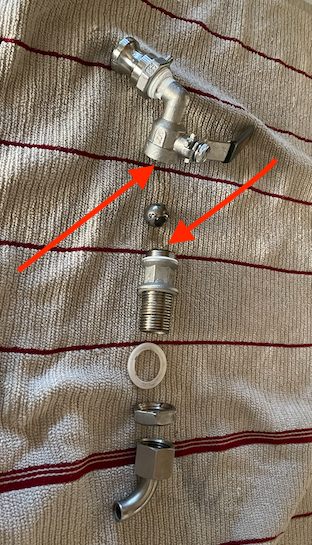My guess would be is that you recirculated way to fast and compacted the grain bed on this brew and the remaining water filled the malt-pipe to the brim.
Good idea for what may have happened. I do a water / grain ratio aiming for 1.33, then I add another 10% for the space around the pipe, then another 3 qts for the space under the pipe. Just so I actually have close to my intended 1.33 where the grain actually sits.
Too little water (if say you went with 1.25 and didn't factor the dead space), plus a semi stuck or stuck mash, and the bottom could well have been empty.












































![Craft A Brew - Safale BE-256 Yeast - Fermentis - Belgian Ale Dry Yeast - For Belgian & Strong Ales - Ingredients for Home Brewing - Beer Making Supplies - [3 Pack]](https://m.media-amazon.com/images/I/51bcKEwQmWL._SL500_.jpg)
















